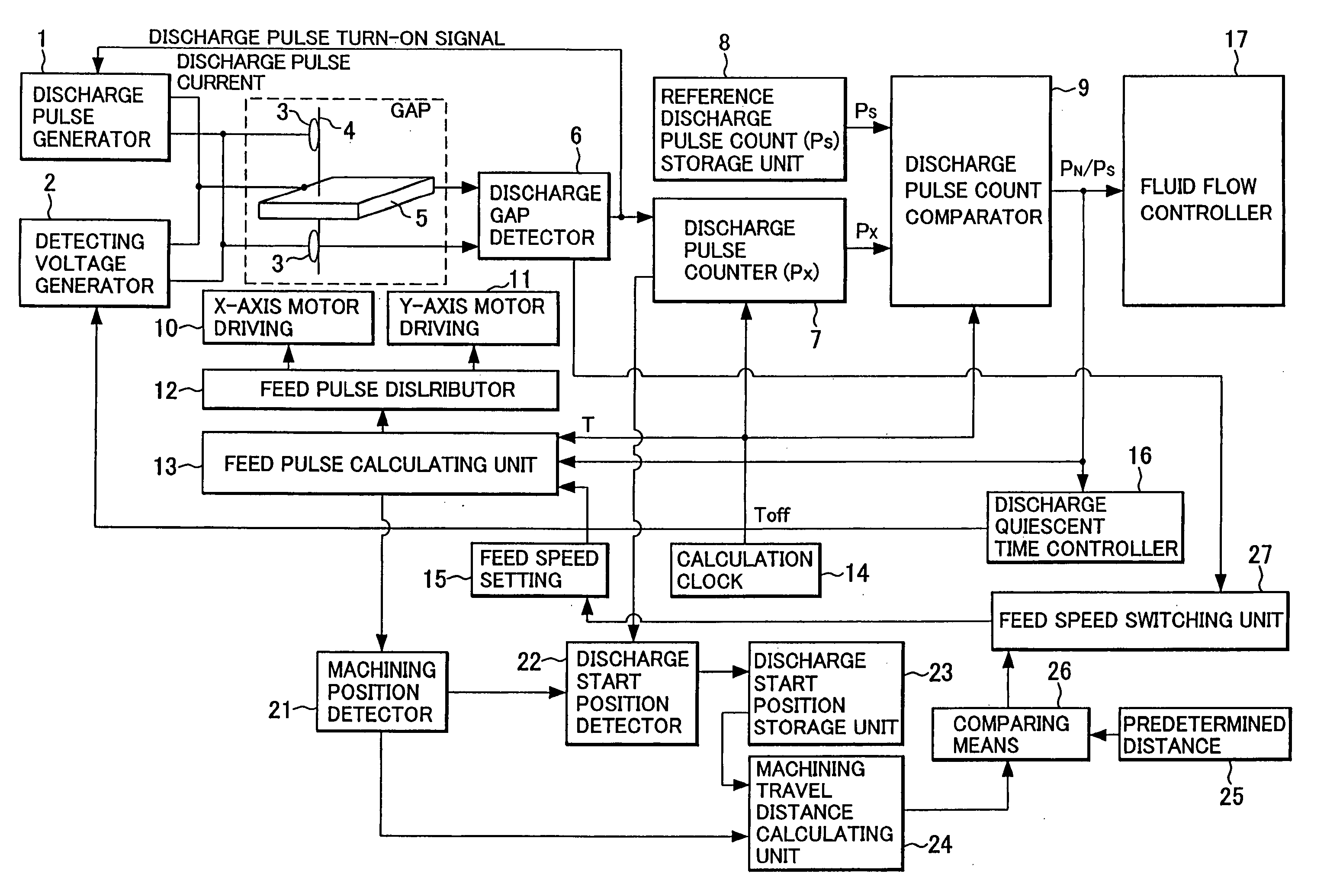Controller for a wire electrical discharge machine
- Summary
- Abstract
- Description
- Claims
- Application Information
AI Technical Summary
Benefits of technology
Problems solved by technology
Method used
Image
Examples
first embodiment
[0112]FIG. 3 is a block diagram illustrating main elements of the controller for a wire electrical discharge machine according to the present invention.
[0113] Reference numeral 1 in FIG. 3 indicates a discharge pulse generator comprising a circuit having transistors and other active elements for generating discharge pulse current, a capacitor charging / discharging circuit, a direct current power supply, etc. One of the outputs from the discharge pulse generator 1 is connected to the workpiece 5 and the other is connected to contact brushes 3 disposed above and below the workpiece 5, supplying pulsed discharge current to a gap between the running wire electrode 4 and workpiece 5.
[0114] Reference numeral 2 indicates a detecting voltage generator comprising a direct current power supply, a circuit having resistors, capacitors, and active elements such as transistors etc. for generating a voltage for detecting the state of the gap, and other components. One of the outputs from the detec...
second embodiment
[0163]FIG. 8 is a block diagram illustrating main elements of the controller for a wire electrical discharge machine according to the present invention. Only the differences from the first embodiment shown in FIG. 3 will be described below.
[0164] In the second embodiment, instead of counting and storing the number of discharge pulses, the integrated value of discharge pulse current is obtained from a current detecting circuit 18 and a discharge pulse current integrated value calculation and storage unit 37. Further, instead of the reference discharge pulse count storage unit, a reference discharge pulse current integrated value storage unit 38 is provided. Then, ratios used for controlling feed pulses, discharge quiescent time and fluid flow are calculated and outputted by a discharge pulse current integrated value comparator 39.
[0165] More specifically, a reference integrated value of the discharge pulse current is set, instead of the reference number Ps of discharge pulses per un...
PUM
| Property | Measurement | Unit |
|---|---|---|
| Time | aaaaa | aaaaa |
| Ratio | aaaaa | aaaaa |
| Speed | aaaaa | aaaaa |
Abstract
Description
Claims
Application Information
 Login to View More
Login to View More - R&D
- Intellectual Property
- Life Sciences
- Materials
- Tech Scout
- Unparalleled Data Quality
- Higher Quality Content
- 60% Fewer Hallucinations
Browse by: Latest US Patents, China's latest patents, Technical Efficacy Thesaurus, Application Domain, Technology Topic, Popular Technical Reports.
© 2025 PatSnap. All rights reserved.Legal|Privacy policy|Modern Slavery Act Transparency Statement|Sitemap|About US| Contact US: help@patsnap.com



